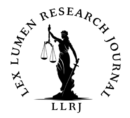Written by Aaryansh Agrawal
5th yaer BA.LLB Student
Christ Academy Institute of Law
March 2025
INTRODUCTION
Streaming platforms flooded with various genres and services has shown a rise in the popularity and consumption of documentaries surrounding True Crime. As a consumer myself with an obsession spanning four to five years, I have also partaken in the true crime wave. Cases such as the Golden State Killer or listening to the podcast “Making a Murderer” has left a mark on my perception for the genre and raised my understanding in the application of Forensic Science to solve intricate true crime cases. The word ‘forensic’ is derived from the Latin word ‘forum’.
Ancient Romans used forums for a wide range of activities like conducting business, public debates, markets, and even enterprises. These places did have some type of organized civil law, public critique, and assessment. In most legal proceedings, the evidence that is given has to be authentic for a criminal defendant to be found guilty. Assisting in solving crimes are forensic scientists who give evidence in law-courts using witnesses, suspects, and skilled persons. Evidence collected from the center of the offense such as hair and fibers are often important motives in forensic investigations.
RESEARCH GAP
The nature of how criminal investigations are conducted differs with the evolution of new scientific and technological practices. Modern society has advanced in leaps and bounds and therefore it is extremely important to assess the scope of role that both science and technology play in the investigative procedure. It is important to evaluate the role of technology in not only the gathering, but also the storing and analyzing of evidence from the crime scene and determine how beneficial and relevant it is.
CHALLENGES IN FORENSIC GENOMICS
One main concerns of forensic genetics is the possibility of DNA sample contamination and eventual degradation. This can be very problematic as the evidence on the scene may introduce the evidence DNA to external DNA sources (detectives, laboratory staff, or other residues). Consequently, this may cause wrong results or misinterpretation. At times multiple individuals may contribute DNA evidence hence leading to a mixed sample. This is mostly encountered when dealing with sexual assault incidents since both the victims and the perpetrators’ DNAs are found. It becomes very difficult to assess mixed samples when there are multiple donors, or when the DNA levels are not consistent; it will need advanced techniques.
FUTURE OF FORENSIC GENOMICS
The fast-growing field of applications of forensic genetics delivers bright promises. Data processing, bioinformatics, and rapidly evolving technologies are expected to provide advanced accuracy, speed, and scope to the analysis of forensic genetics. Within the prospective vision of forensic genetics, AI and machine learning algorithms may be used to deliver additional support in the processing and interpretation of genetic evidence. Implementation of such technologies will help carry out probabilistic analysis, pattern recognition, and interpretation of complex mixtures of DNA patterns. Such applications, built inside the forensic system, hold promises to enhance the accuracy and efficiency of DNA analysis, reducing human errors and making more space for the development of new forensic techniques.
CONCLUSION
Despite the increased attention that forensic evidence has gained in the last decade, published empirical data on the types of evidence that are routinely collected and the extent to which they are submitted and examined by forensic crime laboratories is somewhat wanting. Much less is known about how different types of evidence work and what effect they have on the result of the criminal justice system. Although this current study proves that forensic evidence can change case processing decisions, very often and to different extents, the effects are variant based on the type and level of criminal decision-making, the actual criminal offense, and other aspects of the case. They are not generic across all crimes and all forms of evidence and The procedures are methods that are continually monitored. The evidence contains crucial links between perpetrators and their victims. Along with other information, they help compile spatial data. Analytical chemists use tools and scientific equipment to uncover fingerprints. It can give a reference of height, a model of a car along with a criminal identity a criminal walk. Forensic research assists police in solving cases of crimes such as assaults, murders, and injuries. They solve cases of thefts, forgery, missing persons, dead bodies, etc.
REFERENCES
JOURNALS
- Forensic Science Laboratory Manual and Workbook, CRC Press Taylor and Francis Group. Lyman. (2002) Criminal Investigation-The Art and Science,3rded., Upper Saddle River, NJ. Prentice Hall. Mac Donnel, H.L. (1983).
- Crime Scene: the ultimate guide to forensic science, Dorling Kindersley Limited, Delhi. Redsicker, D. R. (1991).
- Gagandeep Singh Narula, Dr. Vishal Jain, Dr. S. V. A. V. Prasad, “Use of Ontology to Secure the Cloud: A Case Study”, International Journal of Innovative Research and Advanced Studies (IJIRAS), Vol. 3 No. 8, July 2016, page no. 148 to 151 having ISSN No. 2394-4404.
- Gagandeep Singh Narula, Ritika Wason, Vishal Jain and Anupam Baliyan, “Ontology Mapping and Merging Aspects in Semantic Web”, International Robotics & Automation Journal, having ISSN No. 2574-8092, Vol. 4, No. 1, January, 2018, page no. 01 to 05 .
- Gagandeep Singh Narula, Usha Yadav, Neelam Duhan and Vishal Jain, “Evolution of FOAF and SIOC in Semantic Web: A Survey”, CSI-2015; 50th Golden Jubilee Annual Convention on “Digital Life”, held on 02nd to 05th December, 2015 at New Delhi, published by the Springer under Big Data Analytics, Advances in Intelligent Systems and Computing having ISBN 978-981-10-6619-1 page no. 253 to 264


